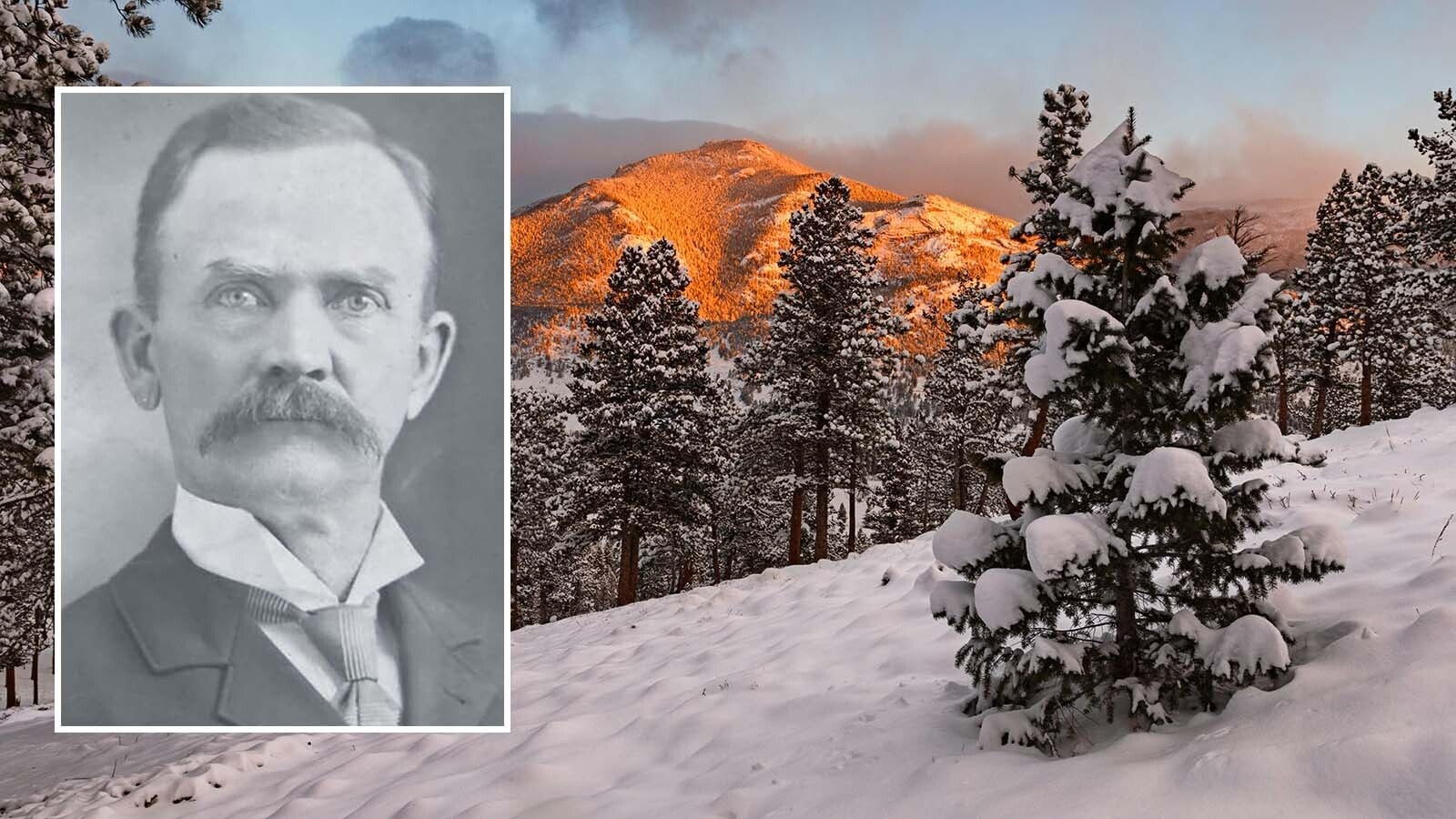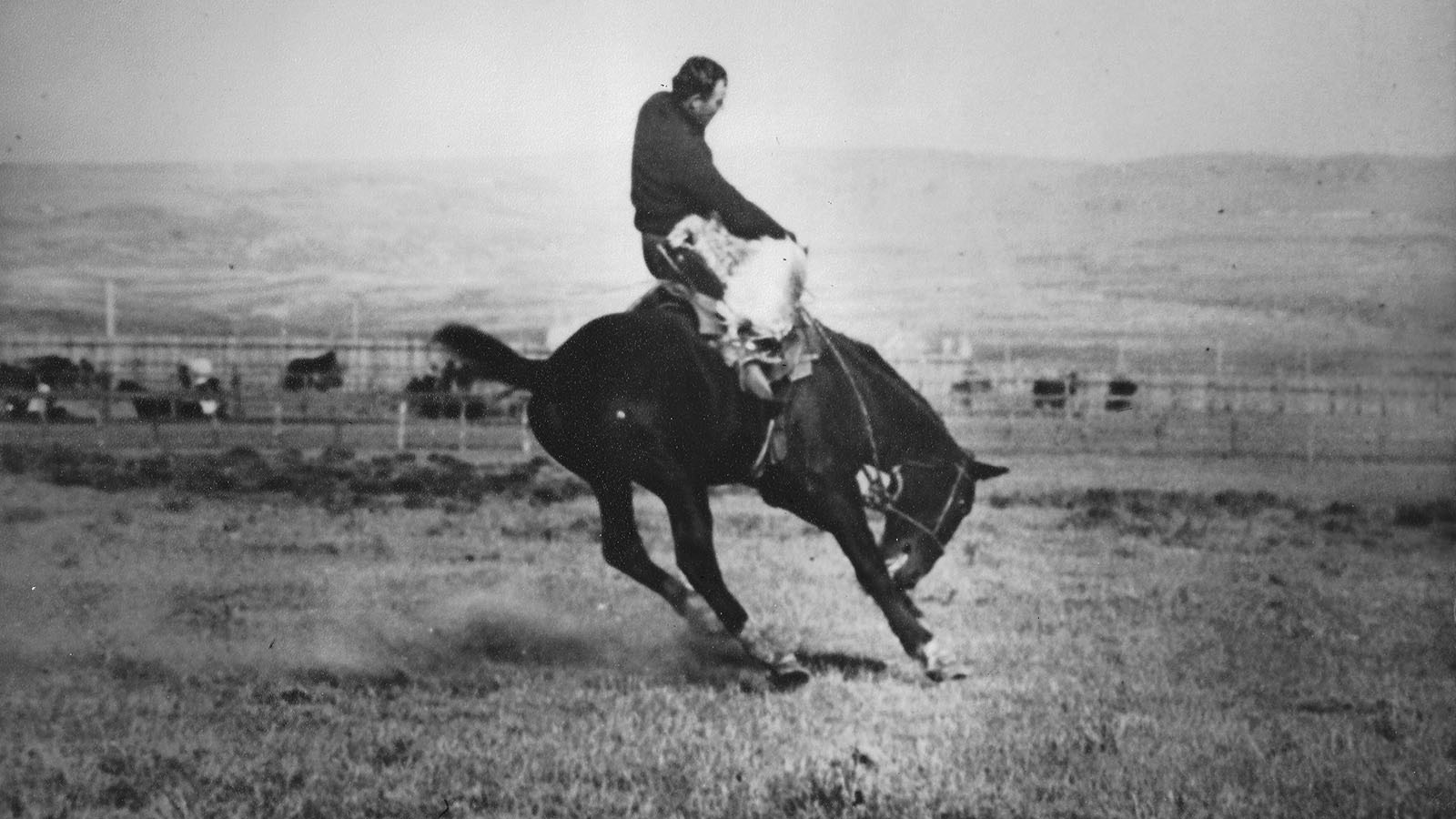With today's news of airplane wrecks dominating TV, radio and the press for the past couple of weeks, I’ve been experiencing flashbacks to 70 years ago when I helped report on the worst airline disaster at that time. It was when United Airline Flight 409 crashed into Medicine Bow Peak in the Snowy Range west of Laramie on Oct. 6, 1955.
The aircraft was a Douglas DC-4 carrying 63 passengers and a crew of three. All 66 perished in the early morning crash. The plane exploded on impact, creating a debris field about a mile long. Two huge black marks scorched the face of the mountain.
The wreckage was discovered by a fighter jet pilot based out of Cheyenne just before noon the day of the crash. The pilot spotted “a huge black smudge where it hit the peak and pieces of wreckage that slid 200 feet down the side of the precipice,” one article states.
The real untold story of the disaster concerns the volunteers who began rescue efforts that afternoon and continued for several days.
First rescuers to reach the scene were local authorities, reporters, and two priests who said they had found about 50 bodies strewn along a 300-foot course down the face of the mountain.
Only a tail piece, part of the fuselage and a wing of the plane had been located at mid-afternoon by rescuers who fought snowdrifts and a howling wind on the 12,013-foot Medicine Bow Peak.
The Reporter Fills A Needed Role
As a 20-year-old journalism student at the University of Wyoming I helped cover the accident for the Branding Iron student newspaper as well as my hometown paper, The Saratoga Sun.
Although I was at the scene as a reporter to get the story of the accident, I was soon put to work with the early effort to find and recover bodies and place them in body bags.
That first day was a real struggle and little progress was made.
The following day, more help arrived in the form of the UW student mountaineering club with climbing gear and zip lines; as well as ranchers with pack horses and wranglers; lumberjacks with strong backs and knowledge of the peak and rock field above Lake Marie; hikers, hunters and fishermen familiar with the rough terrain; college students, firemen, medical personal and rescue units; members of the Wyoming Army and Air National Guard; forest service personnel, plus scores of other volunteers from all walks of life. It was estimated that as many as 125 volunteers answered the call to assist.
Everyone chipped in to do their part. No fuss, no arguing, and no delays.
Fresh snow on the ground combined with the steepness of the crash site and the loose rocky slope made conditions very difficult. Carbon County Sheriff John Terrill was one of the first authorities to secure the scene. As it became obvious there were no survivors to rescue, Terrill established a base camp about a mile down the slope.
Work teams included both civilian and military authorities as well as government officials and airline employees. But only the most experienced mountaineers were able to climb the nearly sheer face of the peak to recover the bodies of victims.
With a system of ropes and pulleys, alpinists secured remains in body bags and sent them down to the base camp. From there the bulky canvas bags were loaded onto pack animals and carried to the nearest structure, the University of Wyoming Science Camp, about six miles away.
From that temporary morgue, remains were taken into Laramie and other nearby towns via ambulances, hearses, and other vehicles.
Now To Figure Out What Happened
By October 10, all of the bodies were accounted for, but questions remained as to what had happened to the flight.
The airline route from Denver to Salt Lake City closely follows the old Lincoln Highway, better known as US Highway 30, across Wyoming.
A well-used route, planes had been flying that path around the north side of Elk Mountain since 1920 and the pilot of flight 409 had never been known to alter the path without notice. Estimated time in flight was two hours and 33 minutes with a mandatory check-in over the small town of Rock River. That radio call never came.
Weather, malfunctioning equipment, and extra baggage were all considered as causes of the crash, but dismissed for several reasons.
One popular theory at the time, according to the Wyoming Eagle newspaper, was that the crew was incapacitated from fumes due to an engine leak, for example. This was later discounted as well, because whoever was flying at the time of the crash had indeed pulled up at the last second.
Some of the wreckage was propelled to the other side of the mountain, some remained hung up on the high ledges, but most of it was scattered along the boulder field that falls from the cliff face down into the snow filled gulley below. Some accounts note that if the plane had been from 25 to 100 yards higher it would have cleared the peak.
Another theory claimed the pilot had been trying to save time and took a shortcut. While the flight was quite late, the gain for such a risk would have been minimal.
No Answer Is Found
A definitive answer has never been fully reached, but the Civil Aeronautics Board—a forerunner to the FAA—concluded its report with this: "Pilot deviated for unknown reasons resulting in the accident."
Whatever the cause, debris was eventually cleared off the mountain thanks to shelling from the Wyoming National Guard.
A video found in the American Heritage Museum Collection shows that process in detail. Young men load shells, blasting away bits of the mountain in a slow and surprisingly delicate process, breaking the wreckage into manageable chunks for removal and to be covered by the dirt and rocks.
Debris was one thing; the scar was another. For years afterwards persons driving past the mountain marveled that the black spot had hardly faded. Years later the scar was also blasted off the face of Medicine Bow Peak and a plaque placed near the site.
This is just a small part of the story. More details may be found in Mel Duncan’s excellent book “Flight 409” and on the internet, especially in an article entitled “How It Ended at Medicine Bow Peak” by Julianne Couch.
Memorializing 1955 United Airline Crash
Years and years had passed since that fateful day in 1955 when United Airline Flight 409 struck Medicine Bow Peak before the event would be memorialized. For 50 years there were numerous efforts to commemorate the tragedy that claimed the lives of 66 passengers and crew members, but to no avail.
In 1997, the University of Wyoming American Heritage Center hosted an exhibit and panel discussion concerning the Oct. 6, 1955, crash. Among those on the panel who described the tragedy were rescuers who had assisted in the recovery effort.
Other tributes include newspaper articles that contain interviews with family members.
The United Air Lines Flight 409 Crash Collection is held at the American Heritage Center. The collection includes photographs of the crash site; materials describing the rescue effort by several mountaineering clubs, including detailed sketches of the pulley system used to lower remains off the ledge; newspaper clippings; maps; and other written and published accounts.
There are also oral history interviews available in both audio and transcribed formats.
Videotapes also show the use of horses to pack the remains off the peak and the National Guard’s shelling of the mountainside.
During that panel discussion, several folks suggested that a plaque be placed on the Peak to mark the crash. Among those on the panel who described the tragedy were rescuers who assisted in the recovery effort and hoped that their efforts would be remembered.
Also, Mel Duncan, a resident of Cheyenne who assisted with the rescue effort, self-published a booklet that detailed the crash. It was available in local bookstores for many years. The manuscript has been digitized so it can be viewed online along with many other materials from the collection.
Duncan once noted that his interest in Flight 409 had been rekindled after Pan Am Flight 103 was blown up over Lockerbie, Scotland, killing all 259 aboard.
That act of terrorism and the trials of its perpetrators had gotten him thinking about the families of Flight 409. He felt it was important to get some sort of memorial in the mountains to comfort the families and mark the event for future generations.
Today my interest in recalling the details of that tragic disaster seventy years ago was sparked by the several airplane crashes which have occurred during the past couple of weeks.
Duncan Gets The Go-Ahead
After several years of negotiations, Duncan received the go-ahead from the Forest Service to place a plaque near the site of the crash.
In 2001, a privately funded plaque memorializing the victims of the crash was erected at the Miner’s Camp turnout on Snowy Range Highway 130 between Centennial and Saratoga, just west of the Snowy Range summit.
Viewers of the plaque face a spot on Medicine Bow Peak slightly south of where the plane met the mountain. There are no trails to the crash site.
The area of the crash site is near the Lake Marie and Mirror Lake recreation parking lots and many people go there to hike the mountain and look for pieces of aircraft. Now that the crash site is nearly 70 years old, it is federally protected and no one may legally remove pieces of the wreckage.
But people who wish to pay their respects to the victims of UAL Flight 409 can save themselves the steep, rocky hike and instead visit the memorial.
Mel said he found the perfect spot for the memorial marker, on a large quartzite boulder with a flat face. He purchased a brass plaque with his own funds and then spent a day drilling to get that plaque into the rock.
The inscription on the plaque reads “In Memory of the 66 passengers and crew that perished on Medicine Bow Peak October 6, 1955.”
A dedication ceremony took place on August 25, 2001, with 132 people in attendance. Many of those people were families of the victims and signed the guest book with notes of grateful appreciation to Duncan.
Compiled by Dick Perue from memory, newspaper accounts, Bob Martin/Dick Perue collection, University of Wyoming American Heritage Center files, and several other articles.
Dick Perue can be reached at rrichardperue@gmail.com









